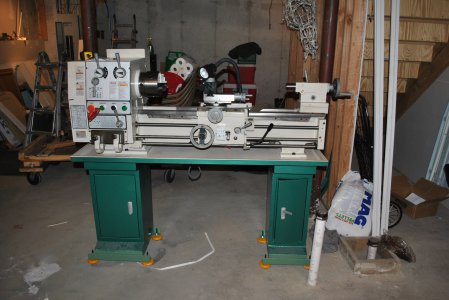- Joined
- Apr 8, 2013
- Messages
- 1,977
I'm trying to level my Grizly G4003G which I just put on the bases last night. I bought a machinsts level with .0002/10 inch accuracy. After I level the headstock it moves when I level the tailstock. One is three graduations one way and the other is about the same in the other direction. It says .0002 on on 10 inches on the level. I've been chasing my tail for an hour trying to get this and it's just not happening. This level is so sensitive the bubble shifts if I get a flashlight too close to it. So, how level is level? .001? .0001? Do I have to wait to let the machine settle onto onto the leveling pads? I'm leveling across the V-ways. Is this Ok or do I have to rig parallels to level across the flats................................................................................................................................................................................................................................................



Last edited:

